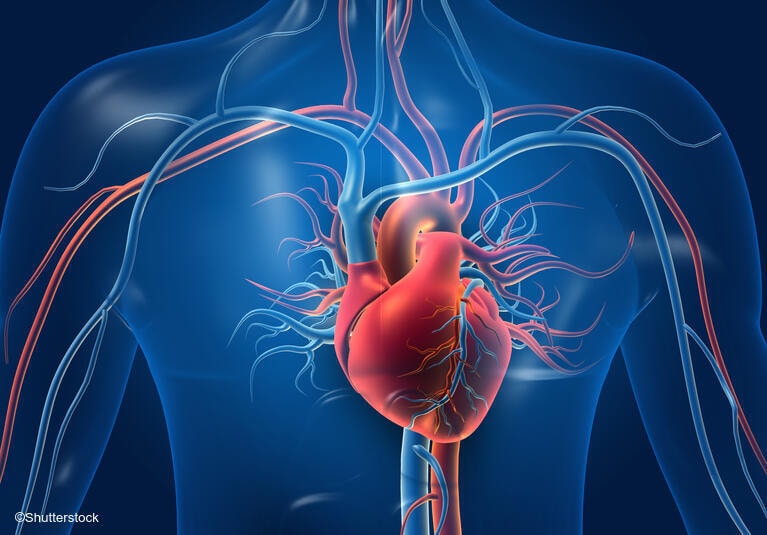Follow Cardiology Jupiter’s expert-led plan to prevent heart disease
Wiki Article
Recognizing the Relevance of Cardiology in Modern Healthcare Services
Cardiology plays a vital function in contemporary medical care, specifically as cardiovascular disease proceeds to be the leading root cause of death worldwide. Advances in diagnostics and therapy have actually changed person treatment, making it possible for earlier interventions and boosted outcomes. Additionally, the shift towards preventive cardiology empowers individuals to handle their wellness proactively. As technology remains to advance, the assimilation of ingenious options may even more redefine cardiology's effect on public health, motivating a more detailed assessment of emerging trends and their effects.The Frequency of Heart Problem and Its Effect on Public Health
Although heart problem continues to be the leading cause of death around the world, its influence prolongs far past private patients to influence public health and wellness systems and economies. The high prevalence of heart condition puts a substantial pressure on healthcare sources, necessitating raised funding for prevention, rehab, and treatment programs. Public health and wellness campaigns should attend to risk aspects such as obesity, cigarette smoking, and less active lifestyles, which add substantially to the rising occurrence of heart conditions.Moreover, the financial burden related to heart problem is immense, including not just direct medical expenses yet also indirect expenses associated to shed performance and premature mortality. Neighborhoods encounter challenges in managing these expenses, usually leading to variations in health care accessibility and end results. As the population ages and lifestyle-related risks remain to intensify, the seriousness for reliable cardiology interventions becomes vital. Dealing with heart illness is not only a matter of individual health but also a crucial public health priority.Advances in Cardiac Diagnostics and Imaging Techniques
Recent advancements in heart diagnostics and imaging strategies have actually changed the area of cardiology, improving the ability to spot and keep track of cardiovascular disease. Strategies such as heart MRI, CT angiography, and echocardiography have become increasingly innovative, supplying in-depth photos of heart frameworks and functions. These modalities permit the early identification of problems like coronary artery illness, heart failure, and valvular disorders.Moreover, innovations in non-invasive diagnostics, such as wearable modern technology and remote tracking devices, have actually equipped patients and medical care suppliers. These tools facilitate real-time monitoring of heart rhythms and other crucial indications, leading to prompt interventions. In addition, synthetic knowledge is being integrated right into imaging analysis, boosting accuracy and effectiveness in diagnosis.Advancements in Treatment Choices for Heart Conditions
Current advancements in cardiology have brought about considerable technologies in treatment alternatives for heart disease. These consist of innovative surgical strategies that enhance procedural end results and emerging medicines that supply new opportunities for treatment. As the field progresses, these innovations play an important duty in boosting client treatment and end results.Advanced Surgical Techniques
Developments in surgical strategies have actually transformed the landscape of cardiology, providing brand-new wish for patients with heart disease. Minimally invasive treatments, such as catheter-based treatments, have actually greatly minimized recuperation times and healthcare facility keeps. Strategies like robotic-assisted surgery improve precision, enabling doctors to browse complex anatomical structures with greater accuracy. Additionally, improvements in imaging modern technology promote real-time visualization throughout treatments, boosting end results. Transcatheter aortic shutoff substitute (TAVR) exhibits an innovation in dealing with aortic constriction, allowing valve replacement without open-heart surgery. Additionally, hybrid approaches that combine medical and catheter-based techniques supply tailored services for various heart concerns. These sophisticated surgical techniques not only boost individual security but also increase therapy choices, underscoring the critical duty of technology in contemporary cardiology practices.Arising Drugs and Therapies
As the landscape of cardiology proceeds to develop, arising drugs and therapies play a critical duty in improving treatment alternatives for heart conditions. Innovations such as novel anticoagulants and advanced lipid-lowering agents have actually transformed the monitoring of cardiovascular conditions, considerably decreasing person morbidity and mortality. In addition, the advancement of gene treatments and regenerative medication uses promising opportunities for treating conditions formerly considered incurable. Medical tests are constantly disclosing the efficacy of these treatments, pushing the limits of typical treatments. The integration of digital wellness technologies helps with individualized medication, allowing for tailored treatment plans based on genetic and way of life variables. Collectively, these developments emphasize the vibrant nature of cardiology, improving client results and redefining criteria of treatment in modern-day healthcare.The Role of Preventive Cardiology in Client Care
Precautionary cardiology plays a crucial function in individual treatment by concentrating on the recognition of threat variables that add to heart condition. Through lifestyle modification techniques and early detection techniques, healthcare companies can successfully minimize the occurrence of cardio events - Cardiology. This positive technique not only enhances client outcomes but also advertises lasting wellnessDanger Element Identification
While heart diseases continue to be a leading source of morbidity and mortality worldwide, effective risk variable recognition acts as a cornerstone of preventive cardiology. Recognizing danger elements such as hypertension, hyperlipidemia, household, and diabetes background is vital for early treatment. Health care experts utilize numerous screening approaches to examine these elements, permitting for tailored safety nets. Additionally, recognizing a client's way of living options, such as smoking cigarettes and physical inactivity, better notifies threat evaluations. This thorough examination enables medical professionals to develop customized treatment plans targeted at mitigating threats. By prioritizing danger factor identification, medical care systems can enhance client end results and reduce the general worry of cardiovascular illness, inevitably adding to enhanced public wellness strategies and resource allowance.Way Of Living Modification Techniques
A plethora of studies highlights the vital duty of way of living modification methods in minimizing heart disease danger. These techniques incorporate dietary adjustments, enhanced physical task, smoking cigarettes cessation, and weight management. By taking on a heart-healthy diet regimen rich in fruits, vegetables, entire grains, and lean proteins, individuals can reduce cholesterol levels and high blood pressure. Normal physical task strengthens the heart and improves overall cardiovascular health. Additionally, quitting cigarette smoking considerably minimizes the danger of heart condition and improves healing prices for those with status quo. Weight management even more contributes to cardiovascular health and wellness by reducing other danger elements such as diabetic issues and high blood pressure. Carrying out these lifestyle transforms not just promotes individual well-being yet additionally acts as a foundation of preventive cardiology in patient treatment.Early Detection Strategies
Way of living adjustments significantly add to lowering heart disease threats, however they are most effective when paired with very early detection techniques. Preventative cardiology highlights the significance of recognizing prospective heart issues prior to they escalate right into severe conditions. Strategies such as high blood pressure surveillance, cholesterol screening, and progressed imaging innovations like echocardiograms play essential additional resources duties in examining cardiovascular wellness. Biomarkers and genetic screening also boost the precision of very early detection, enabling tailored precautionary strategies. Routine heart danger analyses equip medical care companies to interfere proactively, potentially protecting against cardiac arrest and strokes (Dr Garcia). By integrating these very early discovery methods right into regular care, individuals can profit from timely way of life treatments and targeted therapies, ultimately boosting and boosting end results quality of lifeIntegrating Modern Technology Into Cardiology Practices
As developments in innovation remain to reshape different areas, the assimilation of innovative tools and systems into cardiology methods has actually come to be important for improving individual treatment and end results. Telemedicine platforms permit cardiologists to keep track of clients from another location, boosting accessibility to care while lowering the burden on healthcare facilities. Wearable devices, such as smartwatches, allow constant heart rate tracking, informing both individuals and medical professionals to possible concerns in real-time. In addition, expert system (AI) is being made use of to assess substantial quantities of heart data, assisting in early diagnosis and personalized therapy strategies. Advanced imaging methods, including 3D echocardiography, improve visualization of heart structures, leading to more specific treatments. Digital health and wellness records (EHRs) streamline person details administration, guaranteeing that cardiologists have immediate accessibility to critical information. Together, these technological innovations are changing cardiology, promoting aggressive monitoring and enhanced health end results for individuals with cardiovascular problems.The Significance of Person Education and Engagement
Individual education and interaction play a pivotal function in the management of cardiovascular wellness. By gearing up people with knowledge concerning their conditions, treatment alternatives, and lifestyle modifications, medical care helpful site companies encourage individuals to take an energetic duty in their care. This positive strategy can lead to enhanced adherence to suggested medications, dietary modifications, and workout regimens, eventually minimizing the threat of complications.Engagement also promotes a solid patient-provider partnership, encouraging open communication and count on. When individuals really feel educated and involved, they are most likely to voice worries and ask inquiries, which can lead to better medical results. Furthermore, instructional sources, such as workshops or electronic systems, can boost understanding and promote self-management strategies. Overall, prioritizing individual education and learning and involvement is essential for enhancing cardiovascular health, improving lifestyle, and decreasing healthcare costs associated with cardiovascular diseases.Future Trends in Cardiology and Their Possible Influence

Often Asked Concerns
What Lifestyle Changes Can Lower Heart Problem Danger?
The present question addresses way of living adjustments that can considerably decrease heart problem threat. Cardiologist near me. Taking on a balanced diet, taking part in routine physical activity, keeping a healthy weight, managing stress and anxiety, and avoiding cigarette can notably boost cardiovascular wellnessHow Can I Identify Early Indications of Heart Problems?
Acknowledging very early indications of heart troubles involves tracking symptoms such as breast discomfort, shortness of breath, tiredness, and uneven heartbeat. Prompt understanding of these indications can trigger essential medical analysis and intervention for far better outcomes.What Are the Distinctions Between Cardiologists and Cardiac Surgeons?
The distinctions between cardiologists and cardiac surgeons exist in their roles; cardiologists mostly diagnose and handle heart problems through non-invasive techniques, while heart surgeons carry out surgeries to fix architectural heart issues. Each plays an important, distinctive duty.
Exactly how Commonly Should I Get My Heart Health Checked?
The frequency of heart medical examination differs based on individual threat variables. Normally, adults should undertake examinations every one to 2 years, while those with current conditions might need more constant evaluations as recommended by healthcare specialists.What Function Does Genes Play in Heart Condition Risk?
Genes considerably influences heart condition danger, with domestic patterns suggesting inherited problems. Specific genetics can predispose people to hypertension, cholesterol concerns, and other cardio problems, highlighting the relevance of genetic testing in assessing heart health. Heart illness continues to be the leading cause of fatality worldwide, its influence prolongs much beyond private people to impact public wellness systems and economic climates. Public wellness initiatives need to address danger variables such as weight problems, smoking cigarettes, and sedentary way of lives, which add greatly to the increasing occurrence of heart conditions.Moreover, the economic concern linked with heart disease is enormous, including not just direct medical expenses yet here additionally indirect expenses associated to shed performance and premature mortality. Precautionary cardiology plays a crucial role in client care by concentrating on the recognition of threat factors that contribute to heart illness. Man-made knowledge (AI) and equipment learning are improving diagnostics and individual tracking, making it possible for very early discovery of heart conditions. The distinctions in between cardiologists and cardiac surgeons lie in their roles; cardiologists mainly identify and handle heart conditions with non-invasive techniques, while cardiac cosmetic surgeons carry out surgical procedures to fix structural heart issues.Report this wiki page